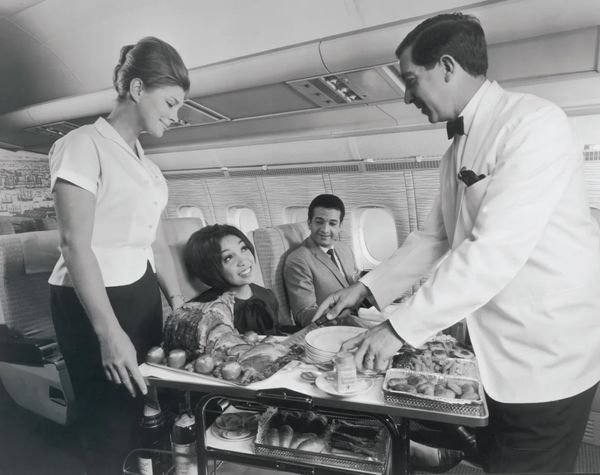Flying has come a long way since its golden age, a period spanning from the late 1940s to the 1970s. Back then, air travel was not just a means of transportation, but a symbol of prestige and luxury. Whether it was the spacious seats, the glamorous uniforms of the staff, or the exquisite five-course meals, flying during this era embodied the spirit of adventure and aspiration.
According to Graham M. Simons, an aviation historian, air travel in the golden age was something special. It was smooth, luxurious, and fast. Passengers were treated to spacious seating, cocktail lounges, and an endless flow of champagne. People even dressed up for their flights, and the staff wore haute couture uniforms. The seat pitch, the distance between seats, was much more generous, providing a comfortable journey. Compare that to today, where space is limited as more and more people are crammed on board.
Booking a flight during the golden age was not as easy as it is today. Choices were limited and prices were much higher. For example, a return ticket from Chicago to Phoenix in 1955 cost $138, which when adjusted for inflation, amounts to approximately $1,200 in today’s currency. Flying was reserved for the wealthiest individuals, making it a truly exclusive experience.

In addition to the luxurious amenities, flying during the golden age also provided a sense of freedom. The rules and security measures were less strict, allowing passengers to enjoy the experience like attending a cocktail party. Passengers were expected to dress in shirt, tie, and jacket. It may sound ridiculous now, but it was the norm back then.
One airline that stood out during this era was Pan Am. With their exceptional service and star-like treatment, flying with Pan Am was like flying with the stars themselves. Joan Policastro, a former Pan Am employee, described her job as an adventure from day one.




